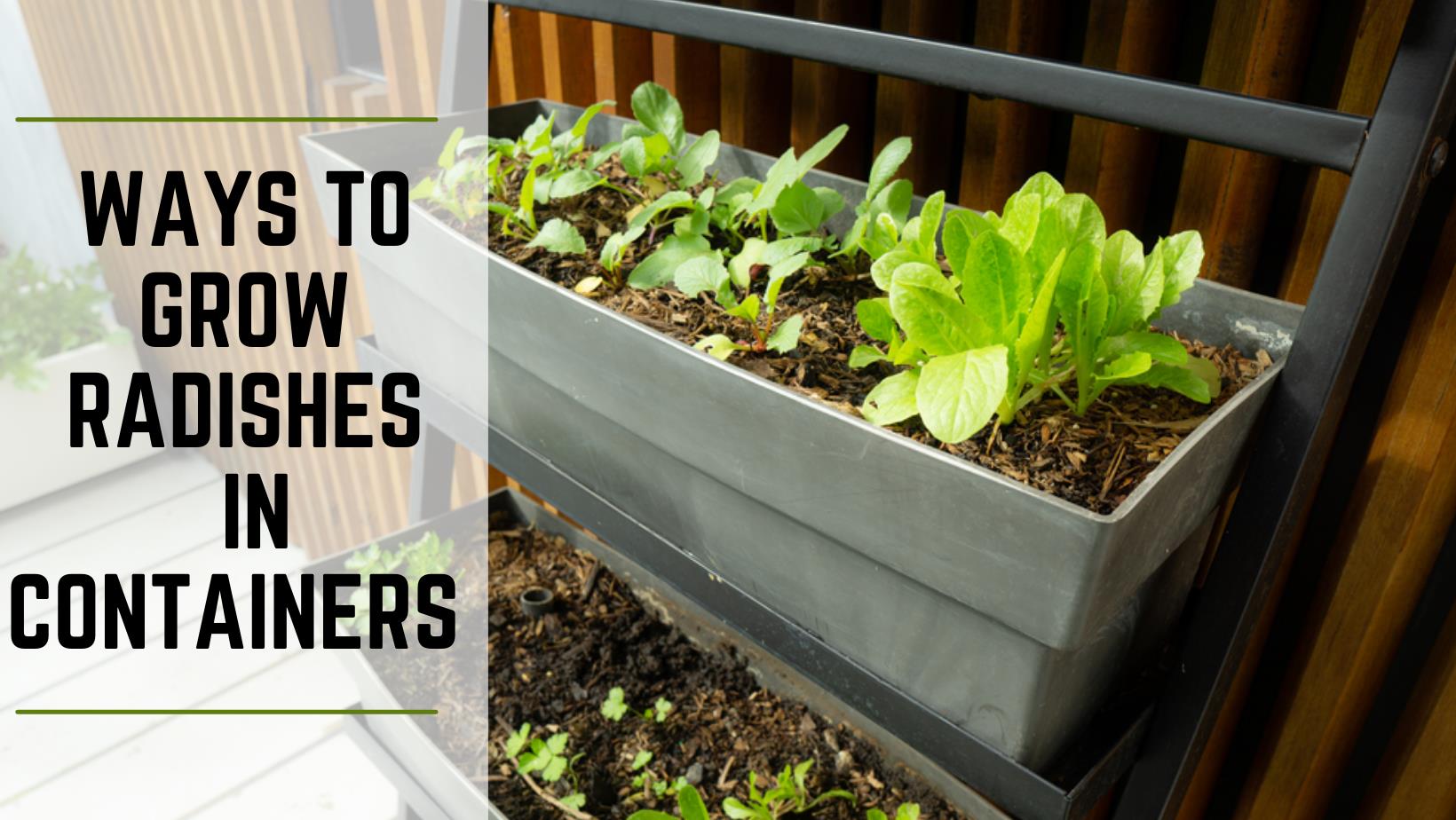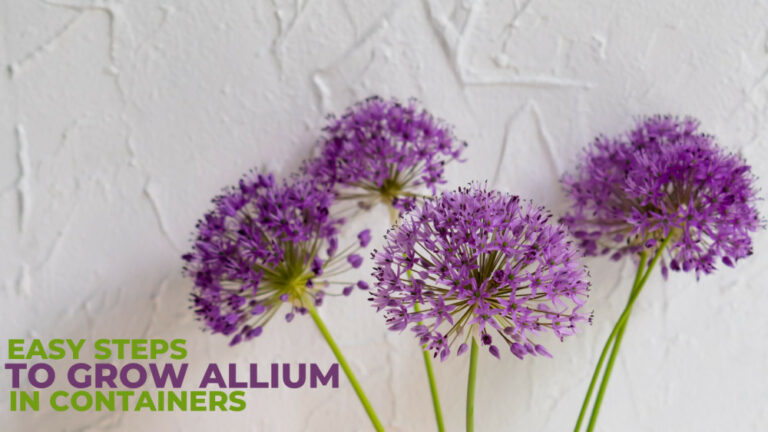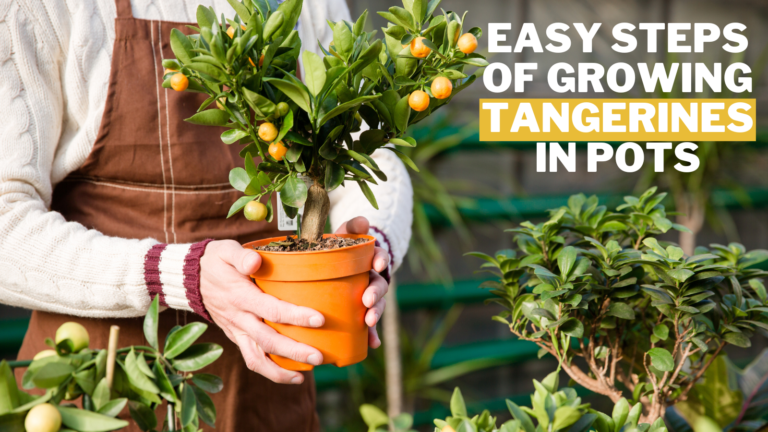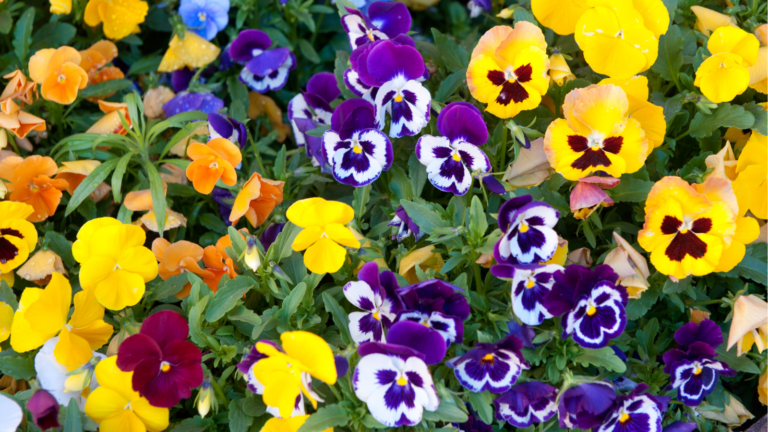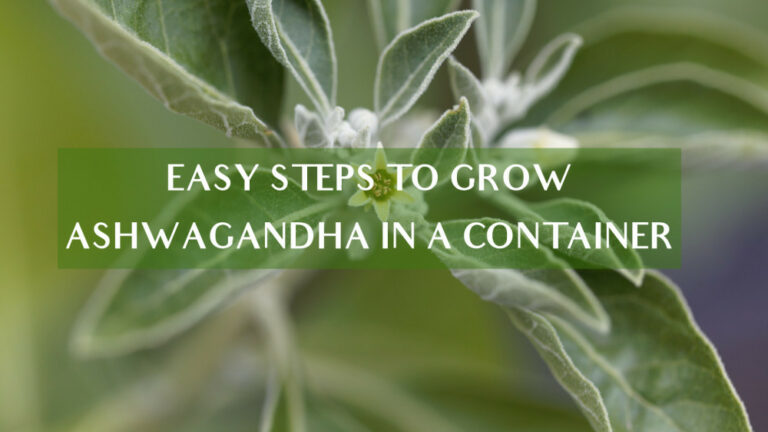Simple Ways To Grow Radishes In Containers
Simple Ways To Grow Radishes In Containers
Radishes are hardy, low-maintenance root vegetables that can be planted multiple times throughout the season. Radishes can also be harvested as soon as three weeks after they've been planted!
Radish seeds can be planted in the spring and the fall, but growth should be stopped during the summer when temperatures are often too high. I will share all A to Z in this article to grow radishes in containers.
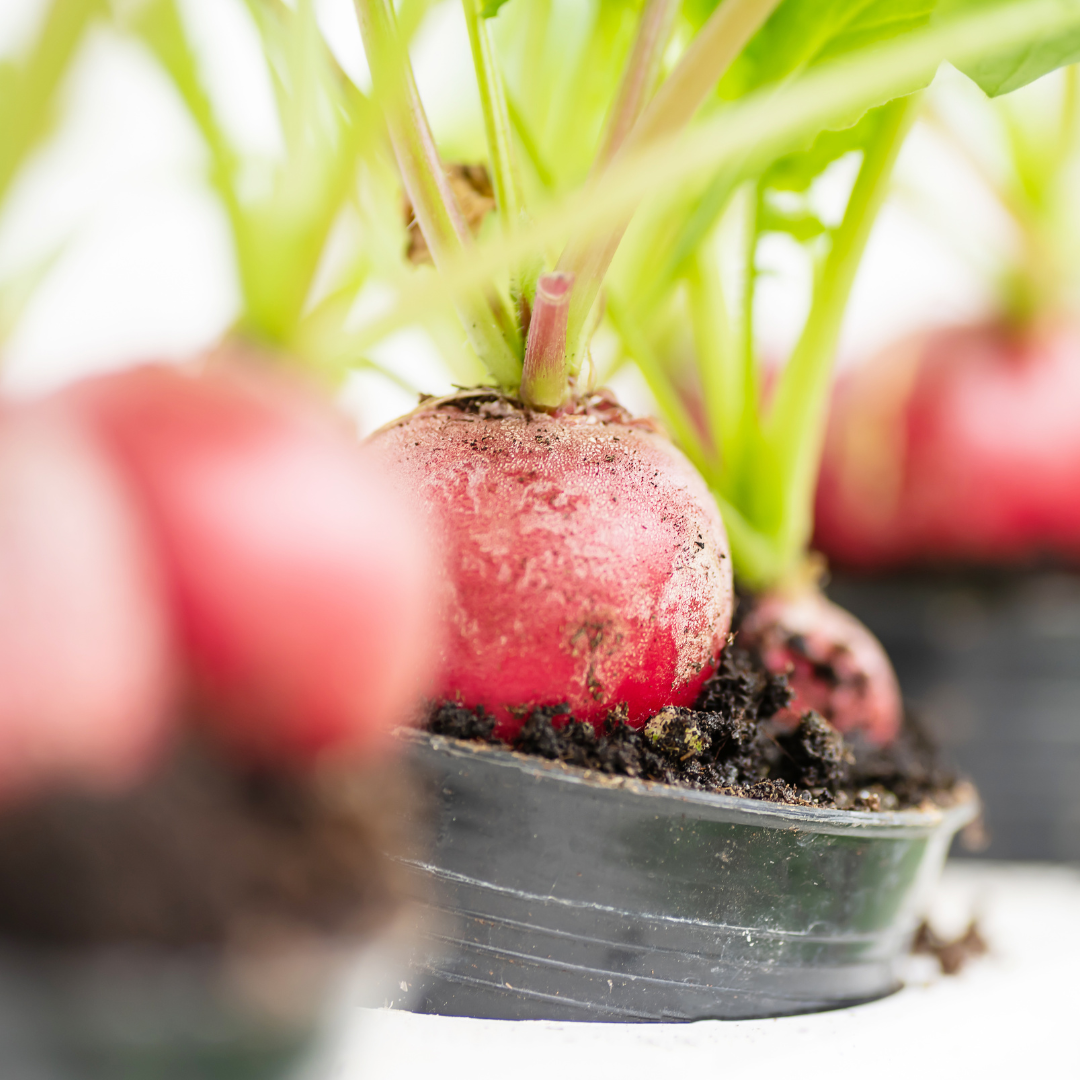
History & Origin Of Radishes
Radishes originated in China, and true wild radish varieties can still be found today. The word radish derives from the Latin word radix, which means “root” and refers to the root of the radish plant. Raphanus is a Latinized version of the Greek phrase Rapanos, which means “easily reared.”
The radish travelled to Middle Asia in prehistoric times, when several diverse varieties were formed, and then to the Mediterranean shortly after.
Ancient Egyptian writings suggest that radishes were farmed before the pyramids were built, and the ancient Greeks revered the radish so highly that they offered miniature gold radishes to the god Apollo. The Romans were also familiar with many radish varieties.
A fascination with enormous radishes arose in Europe and the Orient during the Middle Ages.
In the 13th century, giant radishes were documented in Germany, and in 1544, a German botanist reported seeing radishes reaching 100 pounds.
Small radishes were not reported in Europe and the United Kingdom until the middle of the 16th century, but by 1586, they were widely available throughout Europe and the United Kingdom.
The radish was one of the first vegetables introduced to the New World. In Mexico in 1500 and Haiti in 1565, radishes were already being grown.
The radish soon gained popularity in the Americas, and by 1848, eight different types were documented.
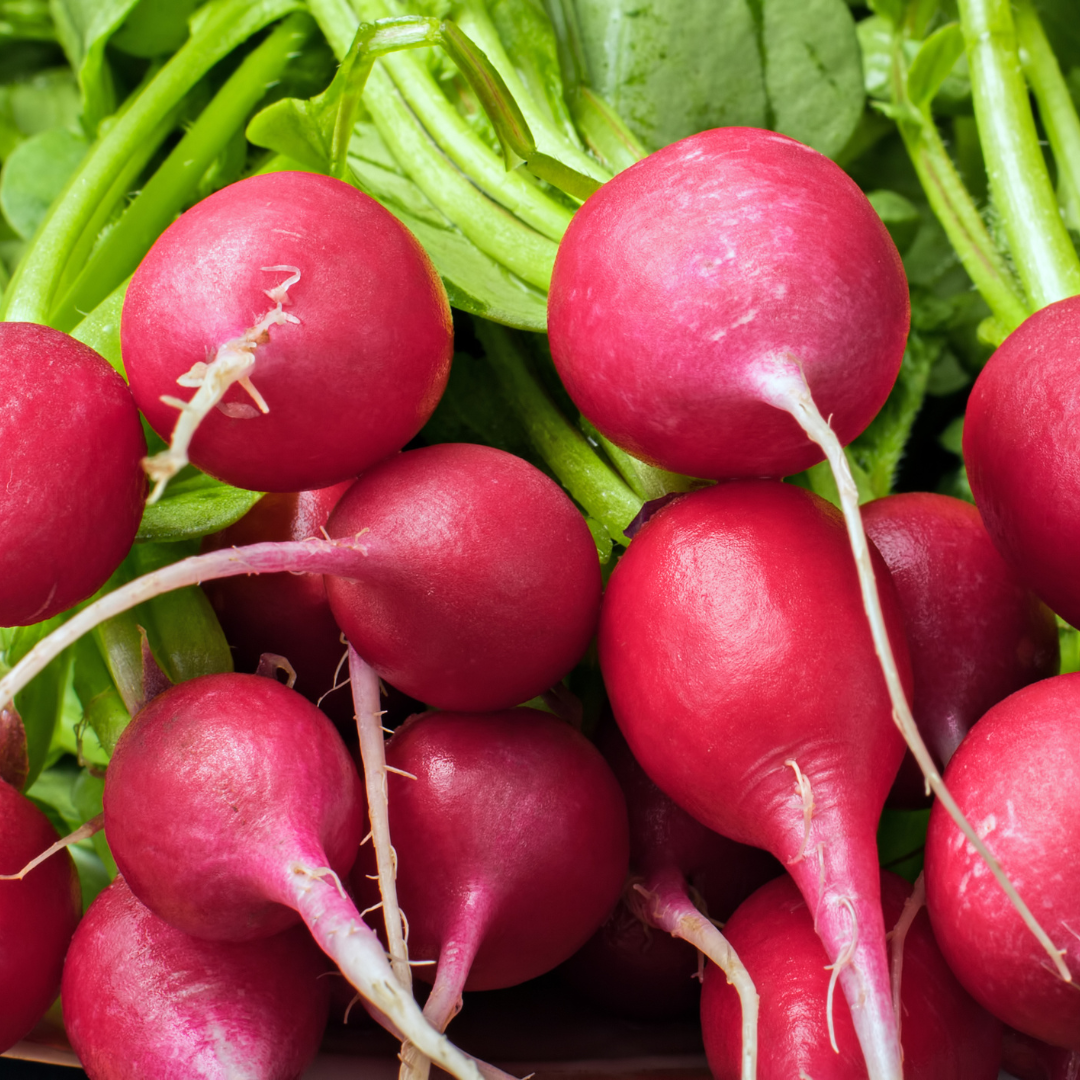
Nutrition Facts Of Radishes
Antioxidants, including catechin, pyrogallol, vanillic acid, and other phenolic compounds, are abundant in radishes. Vitamin C, an antioxidant to protect your cells from damage, is abundant in these root vegetables.
- Calories: 19
- Fat: 0.1g
- Sodium: 45mg
- Carbohydrates: 3.9g
- Fibre: 1.9g
- Sugar: 2.2g
- Protein: 0.8g
Varieties Of Radishes
Radishes are spicy, edible root vegetables that may be found worldwide. Red, pink, purple, white, green, black, and yellow are available colours. I will only discuss cultivated radishes and not wild radishes for our purposes.

1. Watermelon Radishes
Regular radishes are slightly sweeter and less spicy than watermelon radishes. Outside, the colour scheme is beige and white, with a hint of green.
However, as the name implies, the colour inside resembles a watermelon, with a white border around the brilliant pink.
It's a sort of daikon that takes around 50-60 days to mature after being planted. Its development requires only 3 inches of space.

2. French Breakfast Radishes
If you reside in Europe, you're familiar with this variety. However, confusing it with the more popular and spherical pink radish is easy.
These stumpy oblongs are much smaller than Asian variants, with a colour spectrum that ranges from pink to scarlet. Breakfast radishes from France are light and crisp, making them ideal for nibbling.
They're fantastic rinsed and placed onto your breakfast plate, adding colour and serving as a palate cleanser between coffee and food, as the name says.
When used fresh, the leaves are also edible and can provide a delightful bitterness to mixed-leaf salads.

3. Daikon White Radish
If you live near an Asian store, you've probably seen this produce aisle monster. Daikons are white carrot-shaped vegetables that can grow over a foot long.
They're native to East Asia, where they're a staple, but they've also been used in South Asian and Middle Eastern cuisines for a long time.
They're tasty but also a little too prickly to eat fresh. Fortunately, they pickle exceptionally well, softening them considerably.
You've probably had daikon if you've ever had kimchi. It's what gives the fermented cabbage its crunchiness.

4. Malaga Radishes
Like watermelon radishes, the Malaga is a fancy dan of the genus. On the other hand, these are all about the attractiveness of the outside, with a deep purple exterior that looks like beetroot.
On the other hand, it has a crisp and vibrant white inside that isn't to be sneezed at. Malaga radishes are the way to go if the spice of other radishes is too overbearing for you. They have a sweet, mild, and earthy flavour.

5. Chinese Red Meat Radishes
The skin of this radish is whitish-green, while the meat is red. It grows up to four inches in diameter. It's crunchy, sweet, and fantastic in stir-fries and salads of all kinds.
6. Chinese Shawo Fruit Radishes
This radish is distinguished by its vivid green hue, which may be found both inside and outside the radish.
They are a North Chinese delicacy frequently sliced thin and served at tea parties in cities such as Beijing. They have a lovely green colour and are quite edible.
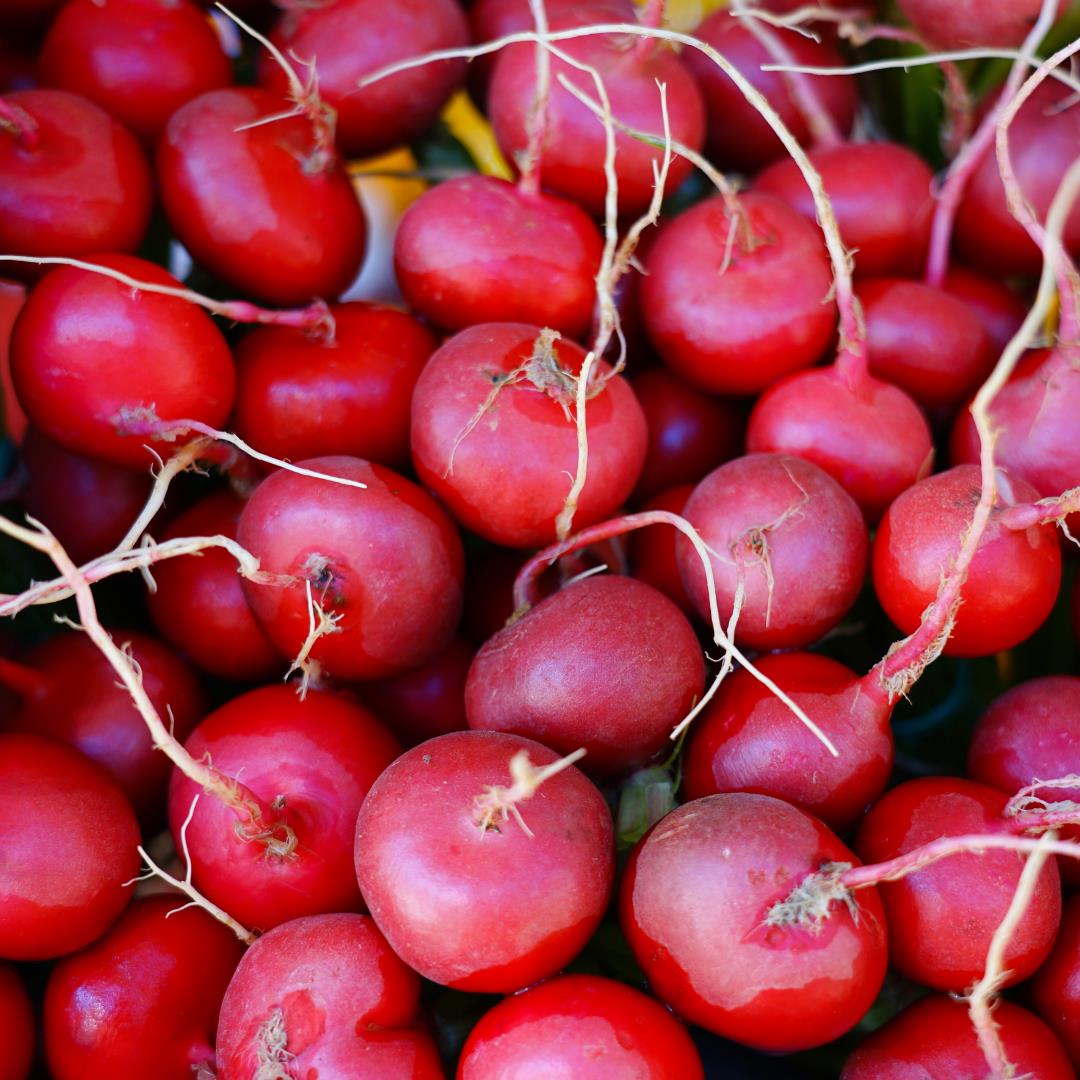
7. Cherry Belle Radishes
One of the most popular radish varieties among gardeners is this spherical variant. Crispy, sweet, and peppery, it's perfect for salads. This early maturing type can be harvested at least 23-27 days after germination.
8. White Hailstone Radishes
These are the ones that resemble golf balls and have long, luscious green leaves that belie their small size.
They're crisp, mild, and quite adaptable. If you produce your radishes, these are a good choice. They're delicious raw, roasted, or pickled.
9. De 18 Jours Radishes
Because they grow in around 18 days, you can harvest these plentiful radishes in less than three weeks.
They are red with white tips and have a spherical to cylindrical form. They have a delicious flavour and a crisp texture and are easy to cultivate in most climates.
10. Early Scarlet Gold Radishes
The skin of this radish is red, the meat is white, and the flavour is soft and juicy. Early Scarlet Gold is an heirloom variety with a crisp texture and a circular form.
Now, let’s find out how to grow radishes in containers. I’m sharing a step-by-step process that will be very easy for you.
Simple Ways To Grow Radishes In Containers

1. Pick A Suitable Size Container To Grow Radishes
The variety determines the type of pot or container for growing radishes. Window boxes and troughs are great for growing radishes indoors on a windowsill or balcony, and we recommend them.
Choose a pot at least 6 inches deep for most regular-sized radish cultivars, such as cherry belle or French Breakfast, to ensure optimum root growth.
You can also choose from circular or rectangle-shaped containers. Regular-sized varieties don't need more than 2 inches between them.
You'll need a 12 to 14-inch deep container and 3 to 4 inches of spacing between the plants if you're planting larger kinds like Daikon or Black Spanish.
You can grow six or seven smaller varieties of radishes or four larger plants in a 12-inch container.
2. Find A Good Location To Grow Radishes
Radishes require at least 6–8 hours of sunlight every day. Thus, they should be grown in a sunny position; the ideal choice is a sunny windowsill.
Although they can thrive in partial shade, they will likely develop slower with only 4 to 5 hours of sunlight daily. If you're growing them in the summer or in a hot climate, you may choose partial shade instead.

3. Prepare Soil To Grow Radishes
Radishes aren't particularly fussy about soil but do best in rich, well-draining soil with plenty of organic matter. You can either purchase or prepare your potting mix dirt.
If you prepare your potting mix, it should be loamy and free of stones. Add a scoop of compost or well-rotted manure to your potting mix as well; this will supply plenty of organic matter to the soil, which radishes require to thrive.

4. Plant Radishes
Fill your containers with potting soil and place them in a sunny spot to plant radishes. Because radish seeds are so small, you can scatter them on the soil and cover them with 12 inches of dirt.
You can also use a special seeding tool to sow individual radish seeds into the soil. Radish seeds are available at any neighbourhood grocery or gardening center.
Maintain a moist environment for the radish seeds until they germinate, which normally takes 5 to 10 days.
Once most seedlings have sprouted, thin them out so that one plant is spaced every 2 inches.
You'll need to space radish seeds a little more apart if you're growing larger varieties of radishes, such as daikon radishes.
They usually grow to be at least 3 inches wide. As a result, ensure that the radish seeds are at least 5 to 6 inches apart. Daikon radish seeds or other larger kinds should be planted at least 14 or 12 inches deep.
When you've finished planting, you'll need to carefully care for your developing radishes to get the finest harvesting results.
5. Temperature Requirements To Grow Radishes
Because radishes are a cool-season crop, the best temperature for growing them in containers is between 50°F and 70°F. However, they can be grown effectively from 40 to 90 degrees Fahrenheit.
However, keep an eye on the temperature when it comes to seed germination. Temperatures between 55° and 85° Fahrenheit are ideal for seed germination. Seeds will germinate more slowly if the temperature is below or above that.
6. Watering Of Radishes
Keep the soil evenly moist; water the radishes, and don't let the pots dry out completely, especially during the first several weeks. Check on your radishes at least every two to three days, and add water if necessary.
You don't have to overwater your plants because they have moist soil. Root rot can be caused by wet soil.
Also, avoid haphazardly watering the radishes. Allowing the soil to dry out before pouring on water to generate extremely moist conditions might cause the roots to break.
7. Fertilizing Of Radishes
Following our directions, you should have added some compost or aged manure to the soil mix before planting the radishes.
This is necessary for good radish growth. You'll need to do this if you want your radishes to grow properly and quickly.
You can add more fertilizer to boost growth after two weeks. However, too much nitrogen might result in early foliage growth and lush radish tops, so using a low-nitrogen fertilizer is better. Fertilizer should be administered every 10 to 14 days for optimal results.
8. Pests & Diseases Of Radishes
You don't have to worry about bugs or diseases while growing radishes in pots. Aphids and flea beetles could be a concern for you.
If you detect aphids on your radishes, spray them with water or use insecticidal soap if there are too many.
Root rot is a common problem with radishes, as with most root vegetables; it can occur if your soil is too wet and you overwater them.
Downy mildew is another prevalent radish disease. It can be avoided by ensuring adequate air circulation and keeping the foliage dry.
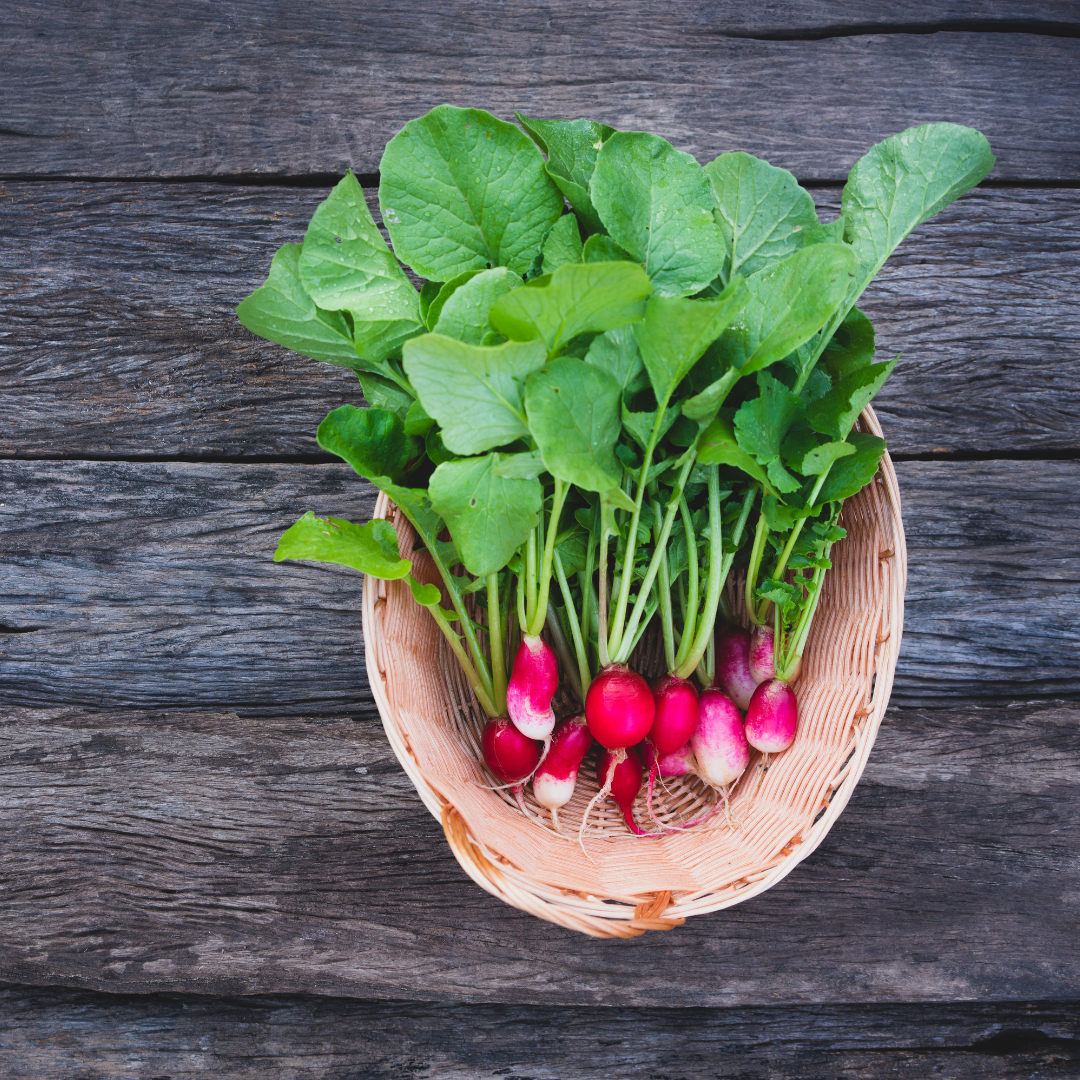
9. Harvesting Radishes
For example, Cherry belle and French breakfast radishes are ready to harvest in as little as 23–30 days. Others, such as daikon radishes, need 50 to 60 days to mature and be harvested.
If you're unsure if your radishes are ready to harvest after time has passed, you can examine them by uncovering the tops of each plant to see how big they are.
The radishes are ready to harvest when the tops are slightly thicker than your thumb. You can pull them out of the ground, but be careful because the leaves are prone to breaking off.
Instead, gently pluck them out of the root from the top. Pull them out as soon as possible. If you don't, the leaves will dehydrate the root, causing it to shrink.
The young and green leaves can be picked and eaten; they're edible and flavorful, and they can be used in salads, soups, and other recipes. Refrigerate the radishes after washing them.
10. Storing Radishes
Radishes should be stored in a cool, dry place. Place the radishes in a plastic zip bag with a damp, folded paper towel at the bottom for longer storage. They'll keep for several weeks if packed and stored this way.
You can also put them in the freezer. Because they're largely water, freezing them without blanching can change their texture slightly, so cut and blanch them first.

Companion Planting With Radishes
Radishes, in addition to being a fast-growing crop, can provide some functionality to your garden. Here's how to make the most of this unusual harvest.
Planting radishes to protect your seedlings and young crops from flea beetles is a wonderful option if you've had problems attacking your valuable seedlings and harvests.
Slower-growing crops are more vulnerable to flea beetle harm since they are young plants. Plant radishes nearby to decrease, if not fully eliminate, the risk.
Most flea beetles will be attracted to the fast-growing leaves of radishes, providing security for your valuable crops.
Even though the radish foliage will be riddled with tiny holes, they will continue to develop roots properly.

Health Benefits Of Radishes
1. High In Fibre
Consuming radish as part of your daily salad without going overboard will offer your system enough roughage and fibres to aid digestion.
It also controls bile production, protects the liver and gall bladder, and helps to prevent water retention.
2. Protects The Heart
Radishes are high in anthocyanins, which help to keep our hearts healthy and reduce the risk of cardiovascular disease. They also include a lot of vitamin C, folic acid, and flavonoids.
3. RBCs Are Saved
Radish is recognized for preventing damage to our red blood cells while also increasing blood oxygen supply.

4. Blood Pressure Control
Radish also contains potassium, which can help to lower blood pressure and keep blood flow under control, especially if you have a history of hypertension.
5. Strengthening Immunity
Because of its high vitamin C content, radish can help protect you from common colds and coughs and boost your fundamental immunity.
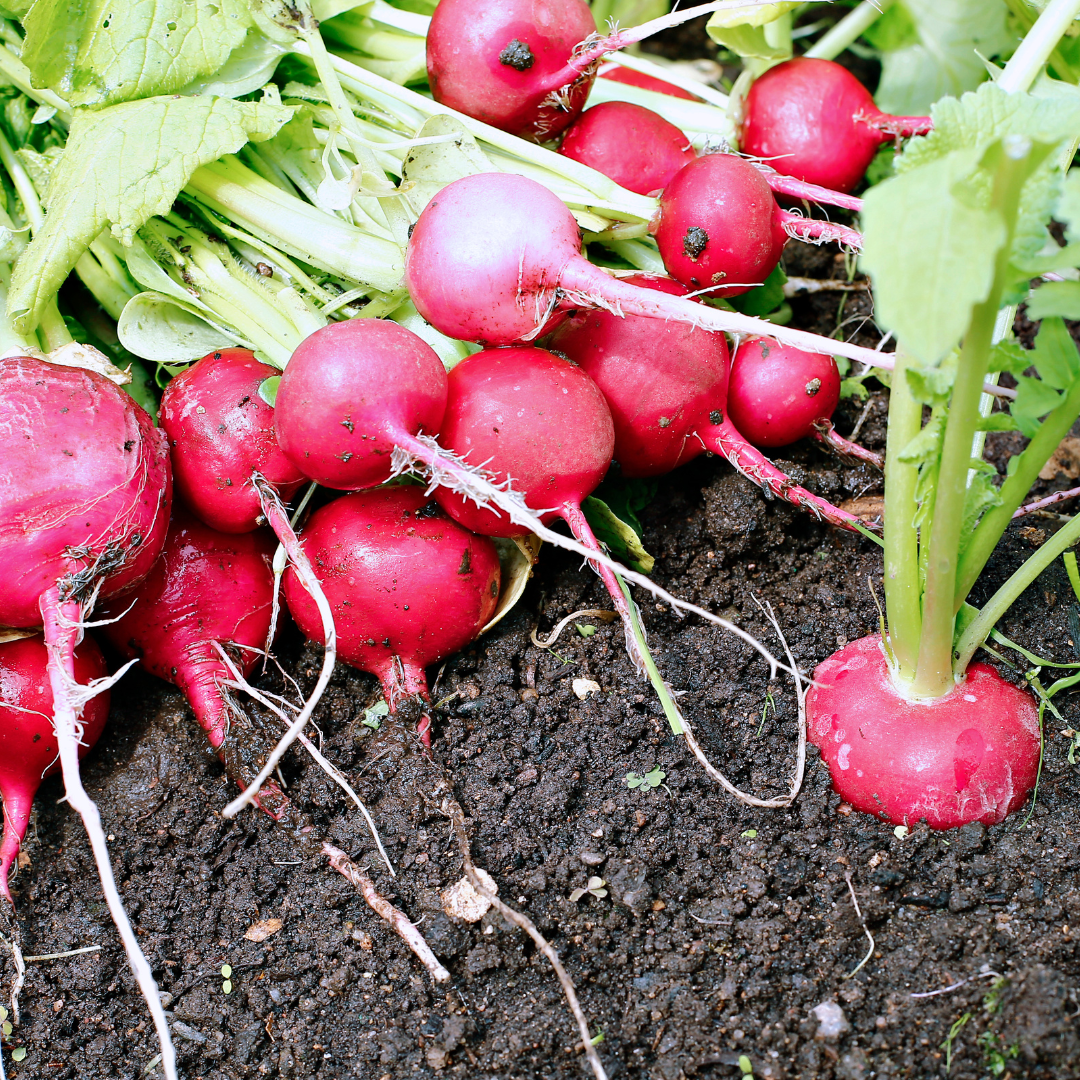
6. Blood Vessels Are Strengthened
This is significant: radish aids in producing collagen, strengthening our blood vessels and reducing our chances of developing atherosclerosis.
7. It's Good For Your Metabolism
This root vegetable benefits your digestive system but also aids in treating acidity, obesity, gastric difficulties, and nausea.

8. Nutrient-Dense
Vitamins E, A, C, B6, and K are abundant in red radishes. It's also high in antioxidants, fiber, zinc, potassium, phosphorus, magnesium, copper, calcium, iron, and manganese, among other nutrients.
Conclusion
Radishes, it turns out, are a really useful and enjoyable crop to have in a container garden! Their rapid development will meet your needs for early harvesting, and their flavourful roots will satisfy your need for homemade products.
They're easy to grow and maintain, so you don't need any prior gardening skills to grow them indoors, in containers, or pots.
You must water them regularly, keep the temperature within the prescribed range, and fertilize them once every 14 days.
I trust you enjoyed this article on the Simple Ways To Grow Radishes In Containers. Please stay tuned for more blog posts to come shortly. Take care!
JeannetteZ
>>>Please click here to read my all-inclusive article, About The Essential Companion Planting Guide<<<
>>>Please click here to read my all-inclusive article about Container Gardening<<<
Are you interested in homegrown herbs and medicine? Please click here to find out more about it!
Your Opinion Is Important To Me
Thoughts? Ideas? Questions? I would love to hear from you. Please leave me your questions, experience, and remarks about this article on the Simple Ways To Grow Radishes In Containers in the comments section below. You can also reach me by email at Jeannette@Close-To-Nature.org.
Disclosure
This post may contain affiliate links. I earn from qualifying purchases as an Amazon Associate and other affiliate programs. Please read my full affiliate disclosure.
You might also enjoy these blog posts:
7 Steps Of Growing Beans In Containers
10 Easy Steps Of Growing Cucumbers In Containers
Find The Best Fruit For Container Gardening
12 Best Flowers To Grow In Your Container Garden
8 Easy Steps Of How To Grow Beets In Containers

